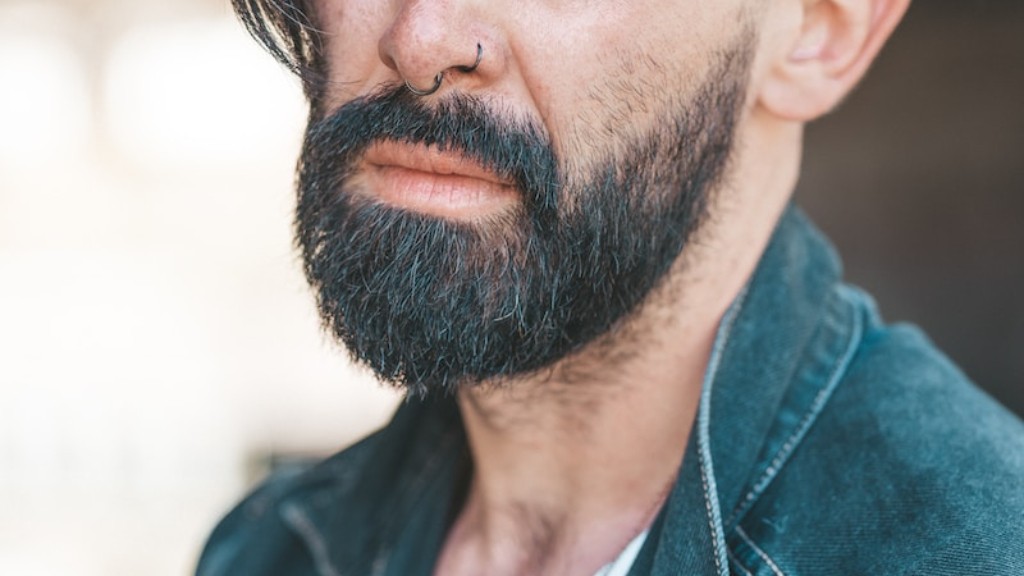Background Information
Connecting a beard to your face can seem like a daunting task at first. In truth, there are a few steps to understand before attempting to attach the whiskers to your own face. To start, a bearded man must have the right materials and tools to efficiently attach the facial hair. Additionally, a number of beard-specific products are available to make the connection much smoother and more comfortable.
Materials and Tools
The very first step to properly connecting a beard to your face is having the right materials and tools. First and foremost, a suitable beard will be necessary – natural or synthetic hair will both work, so long as they are the right size, color and style to suit the wearer’s preferences.
The beard will also require some form of adhesive; hair glue, wig glue, or glue-on fabric adhesive will all work, depending on the type of beard. A wide-toothed comb or hairbrush, a pair of scissors, and a small bowl to mix adhesive are also necessary. Finally, a razor or trimmer may be used for styling the hair after adhering it to the face.
Attaching the Beard
Once the materials and tools are ready, the process of attaching the beard begins. Start by tracing the shape of the beard onto the person’s face, using a makeup pencil to draw out the shape clearly. Then, mix the adhesive according to the manufacturer’s instructions and apply it to the facial hair using a small brush or sponge. Alternatively, a hair glue stick can also be used to apply adhesive directly onto the face and the beard.
Once the adhesive is ready, carefully adhere the beard onto the marked area of the face, making sure to apply the whiskers evenly onto the skin. Allow the adhesive to dry completely before trimming and styling the beard.
Maintenance and Care
To maintain a connected beard, it’s important to take proper care of the facial hair. Depending on the type of hair used, washing and conditioning the beard may be necessary. Synthetic beards will most likely require some kind of special brush designed for detangling synthetic hair and for removing excess adhesive. Natural beards can be trimmed and shaped with scissors, with a razor for a more drastic change in length or shape.
Grooming
Once the beard is properly connected and taken care of, it is time to groom the facial hair. A wide-toothed comb, specifically designed for beards, can be used to remove any tangles or knots. Additionally, beard oil or balm can be used to soften and protect the beard while styling. Using a small brush, a small amount of product can be brushed through the whiskers, starting from the sides and moving inwards. Lastly, a styling product can be used to add texture, shape, and volume to the facial hair.
Removing the Beard
Removing the connected beard is just as important as maintaining and styling it. To start, a makeup remover or skin cleanser should be used to remove any excess facial hair glue. Then, soak a cotton pad with water and gently press it onto the beard for about five minutes. This should help to loosen the glue and make it easier to peel off the facial hair. Once the glue has been removed, carefully trim and shape the beard with a comb and scissors.
Adverse Reactions
When connecting a beard, it’s important to look out for any adverse reactions to the adhesive and products used. These reactions can include redness, itching, or swelling of the face or the skin around the beard. If these reactions occur, immediately stop the process and contact a doctor or a dermatologist for further advice.
Special Ingredients
When choosing beard adhesives and products, it’s important to look for special ingredients that help soothe and protect the skin. These could include natural oils, like Coconut oil, Jojoba oil, or Argan oil, which are known for their nourishing and hydrating properties. Vitamins E and B5 are also beneficial for soothing the skin and protecting it against environmental damage.
Safety Tips
To reduce the risk of any adverse reactions and ensure a safe connection, it’s important to use specific safety tips. Test any products on a small patch of skin before using them on the entire beard. Additionally, use the right adhesive for the type of beard; hair glue is best suited for natural beards while glue-on fabric adhesives are best for synthetic beards.
Application Technique
The application technique is also very important in connecting a beard. Firstly, apply the adhesive thinly rather than thickly; this will help to avoid clumping and will also make it easier to shape the facial hair. Secondly, continuously move the beard around on the face to ensure even coverage. Finally, it’s important to look out for spots or patches that have been left out.
Long-Term Care
For long-term results, proper long-term care is essential. After connecting the beard, it’s important to keep the skin and hair hydrated and nourished. Natural oils, such as Coconut oil or Jojoba oil, can be used to help protect the beard from environmental damage and to keep it looking healthy. Additionally, beard balms and styling products should be used sparingly and only when necessary.
Storage and Cleaning
Store the beard in a dry place and keep it away from direct heat and sunlight. Proper cleaning and maintenance is also important; regularly use a detangling brush and shampoo to keep the facial hair clean and in good condition. Lastly, clean the brush and other tools after each use to avoid any build-up of product residue.



